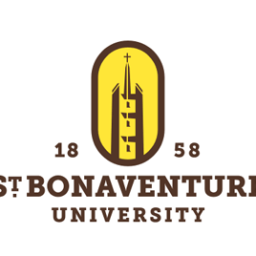
Marianne Jordan
Marianne Jordan serves as Senior Managing Director of Grants, Foundation Relations Practice Leader in the Higher Education Practice at McAllister & Quinn. Marianne brings more than 25 years of experience working with colleges and universities to help secure millions of dollars in federal and foundation funding.
Federal Funding in Higher Education: A Historic Partnership
The federal government and higher education have been strong collaborators historically, solving problems together and devoting resources and expertise to addressing important issues. Together, they have helped talented students who need scholarships to pursue careers in the sciences and medicine and have helped students realize how the humanities open doors to empathy and compassion for others, a good life, and active citizenship.
Federal grants have supported cutting-edge research in scientific, technical, and biomedical fields since the mid-20th century, driving public health breakthroughs and creating innovative tools to increase productivity at the workplace. This support has been diminished with recent federal cuts, profoundly impacting the higher education sector. Higher education’s core mission is to educate leaders across the spectrum of disciplines and prepare them for to career paths, and the US economy depends on higher education to train an educated workforce and citizenry.
The Rising Importance of Grant Diversification
Colleges and universities have been strengthened in a variety of ways as a result of earned federal grant funding. Research and programmatic grants fuel intellectual vibrancy and discovery on college campuses and create dynamic social environments for students and faculty members. Higher education institutions continue to pursue their missions, even as they adjust to the new administration’s stance toward higher education. Perhaps more than ever, external grant funding is essential as colleges navigate the enrollment cliff and changing demographics. Now that the catalyst provided by federal funding is under threat, higher education leaders must increase their efforts to diversify their funding sources to include opportunities offered by private foundations.
Foundations Under Pressure Amid Policy Shifts
Even as higher education looks to foundations to fill the gap left by federal cuts, foundation leadership will be challenged by the speed and dimension of proposed changes that they are being summoned to “fix.” The National Endowment for the Humanities, the National Institutes of Health, and the National Science Foundation have terminated more than 1,000 grants each and the agencies have canceled many more granting programs due to their connections to DEI. These funders are primary engines of innovation and support for college and university students and faculty. Federal funding priorities at these agencies are changing and agencies may yet develop new opportunities still pertinent to higher education.
Challenges Facing Philanthropy in a Politicized Landscape
Foundations cannot completely fill the gap left behind by the administration, especially in the face of the recent DEI Executive Order, the jittery stock market, and the cuts proposed and implemented by the Department of Government Efficiency (DOGE), including agency staff layoffs. The White House directed federal agencies to investigate up to nine publicly traded corporations, universities with endowments greater than $1 billion, and nonprofits and foundations with assets exceeding $500 million because of their support for DEI. With nearly 350 foundations falling into this category, many prominent foundations initially remained silent in the face of the administration’s threats, opting for a risk-averse approach to protect their endowments and autonomy.
Philanthropy Steps Up: A Strengthened Response
Philanthropy’s response has become much stronger than it was in the first 100 days of Trump’s second administration. Collectively, promising activities are developing rapidly. Led by the Council on Foundations, nearly 670 foundations and consortia have signed the Public Statement on Philanthropy, asserting their First Amendment right to make grants of their choosing. The Council has stated, “We must have the freedom to direct our resources to a wide variety of important services, issues, and places, to improve lives today and build a stronger future for our country.”
Leading Examples of Foundation Action
Striking examples of foundation leadership are emerging.
- The Marguerite Casey Foundation quickly countered Trump’s denouncement of DEI by committing $130 million to nonprofits who support racial and economic justice.
- California foundations have committed to ongoing support of social justice and racial equity for their nonprofit awardees.
- The Kresge Foundation has publicized that it will continue “centering equity in everything it does.” Kresge President Rip Rapson has told the public that “Nothing in the vicissitudes of the emergent political environment changes our commitment to (our) values….” Kresge’s values guide programs for effective community development, especially in Detroit, where the goal is to create long-term equitable opportunity.
- The Robert Wood Johnson Foundation has re-committed to funding diversity in medical education.
- The Spencer Foundation just announced $25,000 grants to address immediate needs following the termination of NSF grants.
- Several regional foundations, including the Meyer Foundation in Washington, DC, have issued invitations to nonprofits to apply for rapid response or emergency grants to address the loss of federal grants at least partially.
- The MacArthur Foundation has announced that it will expend at least 6 % of its endowment on grants, (up from 5%) and the Freedom Together Fund will raise its payout rate to 10% “or more.”
Financial Readiness and Strategic Coordination
Well-resourced foundations have the finances to hire legal experts should they be investigated, especially those with assets greater than $1 billion. Foundations are convening now to formulate strategy, especially as they are potentially being targeted for increased excise taxes by Congress. As recently as several months ago, foundations were well positioned to increase giving when their assets hit a record high of $1.5 trillion due to the surging stock market.
The Council on Support and Advancement of Education reported that organizations provided $37.5 billion to higher education in 2023 in support of core programs. Extraordinary assets allow foundations like MacArthur, Ford, and the Freedom Together Fund to be vocal about the need to continue funding important causes.
In speaking publicly now and in seriously considering an increased number of grants and greater endowment spending, large national foundations will provide role models for smaller foundations. The example these wealthy foundations set will have a ripple effect, demonstrating to lesser-endowed foundations that they too must support worthy causes impacted by federal cuts, including colleges and universities as they continue to prepare students who will lead us into the future.
The Call to Action to Foundations: Increase Giving in a Time of Crisis
Aaron Seybert, who is the Managing Director of the Social Investment Practice at the Kresge Foundation, has counseled foundations to spend more of their assets during this volatile time: “As important as endowments are for generating interest revenue and undergirding a legacy of impact…for many causes, today is the rainy day you’ve been waiting for.” The Skoll Foundation is increasing its payout by more than 30 percent this year to “signal to other funders to consider this an emergency and increase their grant making.”
Nonprofit leaders, including college presidents, also are pressing foundations to ramp up spending, emphasizing the important linkage between foundations and the success of institutions of higher education. Meet the Moment has issued “a call to action to address the gap of coordinated response from the public sector.” Meet the Moment urges foundations to increase their payout rates above the 5% legal requirement over the next four years and to consider making stock gifts to nonprofits. Significantly increased grant making by foundations of all sizes would be life-changing to college and university leaders who could then focus their funding requests on replacing federal funding and supporting their educational and research priorities—and on fostering future leaders and professionals.
Significant Pledges from Key Foundations
145+ funders have now signed the pledge to take bold action. President of The Mellon Foundation Elizabeth Alexander, who leads the largest foundation in the nation dedicated to the arts and humanities, has committed $15 million in emergency funding to the 56 Humanities Councils across all states and territories, subsidizing them because of lost NEH funding. President Alexander remarked: “Philanthropy alone cannot resolve the challenges facing universities, libraries, museums, and the arts and humanities organizations across the country, nor fully replace cut federal funds. But we are working thoughtfully and urgently to do all we can to fill the gaps as we navigate this tumultuous era.”
Another foundation that has stepped into the breach is The Skoll Foundation, as noted above; they have committed $25 million to fund grantees affected by US international aid cuts. Bloomberg Philanthropies has publicly stated that they will continue supporting the social good. Their “philosophy and approach has not changed,” a spokesperson told the Chronicle of Philanthropy. “Regardless of who holds federal office, we will continue to look for unmet needs, tackling challenges that are either overlooked or underfunded but cannot be ignored.”
Philanthropy’s Role in Upholding Civil Society
While extraordinary, these recent actions are central to the missions of private foundations that are created for charitable purposes, are legacies to their founders, and are committed to support the common good. For example, William and Flora Hewlett, creators of the Hewlett Foundation, “believed in the importance of the charitable sector and institutions of philanthropy and civil society as bedrock elements—essential for the public good.” In other words, to flourish, societies need the benefits of a philanthropic sector. Higher education and foundations have traditionally been partners in ensuring a combined contribution to the public good. This partnership has had an enormous impact on the strength and vitality of American higher education. Now, we are asking foundations to do more.
Looking Ahead: The Symbiotic Relationship of Foundations and Higher Education
Just this April, David Callahan, Editor of Inside Philanthropy contemplated the slow movement among foundations, “As a rule, all institutions tend to keep doing what they’re doing — unless or until some shock forces them to change. Will Trump 2.0 prove to be the kind of disruption that upends the foundation world, remaking how grant makers operate? It’s too early to tell.”[1]
What we can do is to remind foundations of the importance of their partnership with higher education at this crossroads. Responsive philanthropy, particularly from foundations, will lift up college and university leaders as they face the difficult task of replacing lost federal funds. College and university leaders hope in this challenging time that foundations will continue to serve as the bedrock of a civil society. They must make their case vigorously and publicly that accomplishing their mission is essential to securing social good and economic prosperity. Colleges and universities serve as generators of scientific discovery, business ingenuity, artistic creativity, and participatory citizenship. Higher education will continue this critical work and would benefit tremendously were foundations to increase their grant making over the next four years, especially as the landscape of federal funding changes.
About McAllister & Quinn
McAllister & Quinn is a premier federal grant consulting and government relations firm. Based in Washington, DC, McAllister & Quinn’s unique approach has helped college and university clients secure over $1 billion in federal and foundation grant funding. For more information about how McAllister & Quinn partners with institutions, please Contact Us to schedule a conversation.
Sources
[1] Callahan, David. Explaining the Biggest Weaknesses of Foundations, Inside Philanthropy, April 1, 2025. (https://www.insidephilanthropy.com/home/institutional-limitations-foundations?utm_source=daily-newsletter&utm_medium=rss-email&utm_campaign=42519&pnespid=tKU4VyFLafoB2eWYvGzoH57Qv0PzD4QvL_Sly_FnrgVmThbg1TXYWKy10A_hTGwCnL96TJdZ5eM)





